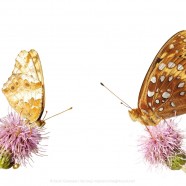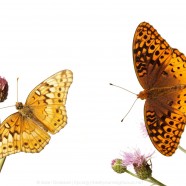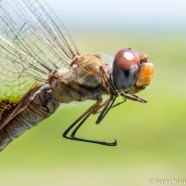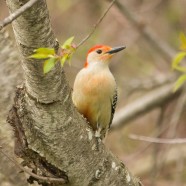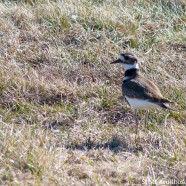Variegated & Great Spangled Fritillaries
Here’s a beautiful close-winged view of the Variegated Fritillary (Euptoieta claudia) and Great Spangled Fritillary (Speyeria cybele). Photographed by RTPI Affiliate Sean Graesser for the Meet Your Neighbours global biodiversity project in Connecticut while on assignment for the Roger Tory Peterson Institute of Natural History.
Read MoreVariegated Fritillary (Euptoieta claudia) and Great Spangled Fritillary (Speyeria cybele)
The Variegated Fritillary (Euptoieta claudia) and Great Spangled Fritillary (Speyeria cybele) can both be found in the Northeast in meadows and fields. The Variegated is much less common in Connecticut, being as it is mostly a southern species. Right now in the Northeast more and more butterflies are being seen migrating on emerging from new habitats. Photographed by RTPI Affiliate Sean Graesser for the Meet Your Neighbours global biodiversity project in Connecticut while on assignment for the Roger Tory Peterson Institute of Natural History.
Read MoreSpot-winged Glider
Today was the best day that I have experienced so far this year for migratory insects! Red Admiral and Monarch butterflies were on the wing, and dozens of dozens of dragonflies were zipping by including Common Green Darners, Black Saddlebags, Carolina Saddlebags, Swamp Darners, Wandering Gliders and Spot-winged Gliders (Pantala hymenaea) like this one. You can see the spots of this very difficult to catch species here. Keep an eye out for Sean’s Meet Your Neighbour photo of it sometime soon. So much more life is emerging every day now that we have entered the summer, and it is so...
Read MoreRed-bellied Woodpecker
In our continuing discussion of why the birds are named the way they are, here we see the reason for the name behind the Red-bellied Woodpecker (Melanerpes carolinus). Yes, they have a red head, but not as red as some woodpeckers that go by that name. These birds have pushed north over the last several decades, inhabiting new breeding grounds and in many cases year-round territories. In the last couple of weeks I have noted an influx of Red-bellied Woodpeckers, especially in migratory hot spots, showing how some definitely do move north. We can see that red belly thanks to these views...
Read MoreKilldeers Return
The Killdeer, one of the loudest and most visible late winter/early spring returning species, is moving north rapidly now. As you will likely hear soon enough…they’re back!
Read More



